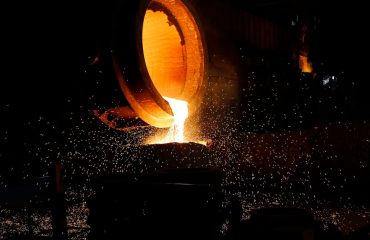body {
font-family: sans-serif;
line-height: 1.6;
}
h1, h2, h3 {
color: #333;
}
Navigating the complex world of manufacturing often requires adhering to a multitude of standards. Within Europe, and increasingly globally, EN standards (European Norms) play a crucial role in ensuring product safety, quality, and interoperability. This comprehensive guide will delve into the intricacies of meeting EN standards in your manufacturing processes, helping you achieve compliance and gain a competitive edge.
Understanding the Significance of EN Standards in Manufacturing
EN standards are developed by European standardization organizations, primarily CEN (European Committee for Standardization), CENELEC (European Committee for Electrotechnical Standardization), and ETSI (European Telecommunications Standards Institute). These standards provide a framework for consistent product design, manufacturing, and testing, ensuring products meet minimum safety and performance requirements. Adherence to EN standards is not merely a suggestion; it’s often a legal requirement for selling products within the European Economic Area (EEA) and increasingly influences global markets. Non-compliance can lead to product recalls, hefty fines, and reputational damage.
Beyond legal compliance, meeting EN standards offers several key benefits:
- Enhanced Product Quality: Standards provide a structured approach to quality control, leading to improved product reliability and performance.
- Increased Market Access: Compliance with EN standards opens doors to a wider range of markets, both within and outside the EEA.
- Improved Customer Confidence: Demonstrating adherence to recognized standards builds trust and confidence among customers.
- Streamlined Processes: Implementing standardized processes can improve efficiency and reduce waste throughout the manufacturing cycle.
The Process of EN Standard Certification
Obtaining EN standard certification isn’t a single event but a comprehensive process. It typically involves several key stages:
- Gap Analysis: A thorough review of your existing manufacturing processes and documentation to identify areas where improvements are needed to meet the relevant EN standards.
- Implementation: Implementing the necessary changes to your processes, documentation, and quality management system to meet the requirements of the chosen EN standard(s).
- Internal Audit: Conducting internal audits to verify that your implemented systems are functioning effectively and meeting the required standards.
- Certification Body Selection: Choosing a reputable and accredited certification body to perform the external audit.
- External Audit: The certification body will conduct a thorough audit of your manufacturing processes and documentation to assess compliance with the relevant EN standard(s).
- Certification Issuance: Upon successful completion of the audit, the certification body will issue a certificate confirming your compliance with the relevant EN standard(s).
- Surveillance Audits: Regular surveillance audits are typically required to maintain certification, ensuring continued compliance.
Key EN Standards Relevant to Manufacturing
The specific EN standards relevant to your manufacturing processes will depend on your industry and the types of products you produce. However, some commonly applicable standards include:
- ISO 9001: While not strictly an EN standard, ISO 9001 (Quality Management Systems) is widely recognized and often a prerequisite for other EN certifications. It provides a framework for establishing and maintaining a quality management system.
- EN ISO 14001: Focuses on environmental management systems, demonstrating your commitment to minimizing environmental impact.
- EN IEC 61000: Covers electromagnetic compatibility (EMC), ensuring your products don’t interfere with other electronic devices.
- EN ISO 13485: Specifically for medical devices, outlining stringent requirements for quality management and safety.
- EN standards specific to materials and processes: Numerous EN standards exist for specific materials (e.g., steel, plastics) and manufacturing processes (e.g., welding, machining), ensuring consistent quality and safety.
Best Practices for Meeting EN Standards
Successfully meeting EN standards requires a proactive and systematic approach. Here are some best practices to consider:
- Establish a robust quality management system (QMS): A well-defined QMS is crucial for ensuring consistent product quality and compliance with standards.
- Invest in training and education: Ensure your employees are adequately trained on the relevant EN standards and their application in your manufacturing processes.
- Maintain thorough documentation: Keep accurate and up-to-date records of all your manufacturing processes, testing results, and quality control procedures.
- Implement regular internal audits: Regular internal audits help identify potential non-conformances and ensure your system remains effective.
- Choose a reputable certification body: Selecting a reputable and accredited certification body can ensure a fair and rigorous audit process.
- Stay updated on changes to standards: EN standards are regularly updated, so it’s crucial to stay informed about any changes that may affect your business.
Overcoming Challenges in Achieving EN Compliance
Achieving EN compliance can present challenges, including the cost of implementation, the time required for certification, and the complexity of the standards themselves. However, these challenges can be overcome through careful planning, resource allocation, and a commitment to continuous improvement. Seeking guidance from experienced consultants or certification bodies can also be invaluable in navigating the process.
Remember that investing in EN compliance is an investment in your business’s long-term success. It enhances your reputation, opens new markets, and ultimately strengthens your competitive position. By understanding the requirements, implementing best practices, and seeking expert assistance when needed, your manufacturing operation can confidently navigate the path to EN standard compliance.
Tags: EN standards, manufacturing compliance, European standards, ISO 9001, quality management systems, product safety




